Comprehensive Phenotypic Characterization of Human Invasive Lobular Carcinoma Cell Lines in 2D and 3D Cultures
- PMID: 30228172
- PMCID: PMC6507416
- DOI: 10.1158/0008-5472.CAN-18-1416
Comprehensive Phenotypic Characterization of Human Invasive Lobular Carcinoma Cell Lines in 2D and 3D Cultures
Abstract
Invasive lobular carcinoma (ILC) is the second most common subtype of breast cancer following invasive ductal carcinoma (IDC) and characterized by the loss of E-cadherin-mediated adherens junctions. Despite displaying unique histologic and clinical features, ILC still remains a chronically understudied disease, with limited knowledge gleaned from available laboratory research models. Here we report a comprehensive 2D and 3D phenotypic characterization of four estrogen receptor-positive human ILC cell lines: MDA-MB-134, SUM44, MDA-MB-330, and BCK4. Compared with the IDC cell lines MCF7, T47D, and MDA-MB-231, ultra-low attachment culture conditions revealed remarkable anchorage independence unique to ILC cells, a feature not evident in soft-agar gels. Three-dimensional Collagen I and Matrigel culture indicated a generally loose morphology for ILC cell lines, which exhibited differing preferences for adhesion to extracellular matrix proteins in 2D. Furthermore, ILC cells were limited in their ability to migrate and invade in wound-scratch and transwell assays, with the exception of haptotaxis to Collagen I. Transcriptional comparison of these cell lines confirmed the decreased cell proliferation and E-cadherin-mediated intercellular junctions in ILC while uncovering the induction of novel pathways related to cyclic nucleotide phosphodiesterase activity, ion channels, drug metabolism, and alternative cell adhesion molecules such as N-cadherin, some of which were differentially regulated in ILC versus IDC tumors. Altogether, these studies provide an invaluable resource for the breast cancer research community and facilitate further functional discoveries toward understanding ILC, identifying novel drug targets, and ultimately improving the outcome of patients with ILC.Significance: These findings provide the breast cancer research community with a comprehensive assessment of human invasive lobular carcinoma (ILC) cell line signaling and behavior in various culture conditions, aiding future endeavors to develop therapies and to ultimately improve survival in patients with ILC. Cancer Res; 78(21); 6209-22. ©2018 AACR.
©2018 American Association for Cancer Research.
Conflict of interest statement
Figures

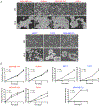
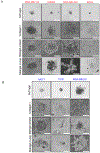
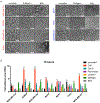
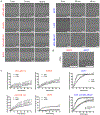
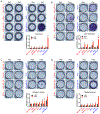

Similar articles
-
E-Cadherin-Mediated Cell-Cell Adhesion and Invasive Lobular Breast Cancer.Adv Exp Med Biol. 2025;1464:259-275. doi: 10.1007/978-3-031-70875-6_14. Adv Exp Med Biol. 2025. PMID: 39821030 Review.
-
WNT4 mediates estrogen receptor signaling and endocrine resistance in invasive lobular carcinoma cell lines.Breast Cancer Res. 2016 Sep 20;18(1):92. doi: 10.1186/s13058-016-0748-7. Breast Cancer Res. 2016. PMID: 27650553 Free PMC article.
-
Proteomic and transcriptomic profiling identifies mediators of anchorage-independent growth and roles of inhibitor of differentiation proteins in invasive lobular carcinoma.Sci Rep. 2020 Jul 13;10(1):11487. doi: 10.1038/s41598-020-68141-9. Sci Rep. 2020. PMID: 32661241 Free PMC article.
-
αE-catenin is a candidate tumor suppressor for the development of E-cadherin-expressing lobular-type breast cancer.J Pathol. 2018 Aug;245(4):456-467. doi: 10.1002/path.5099. Epub 2018 Jun 20. J Pathol. 2018. PMID: 29774524 Free PMC article.
-
Transcriptomic and genomic features of invasive lobular breast cancer.Semin Cancer Biol. 2017 Jun;44:98-105. doi: 10.1016/j.semcancer.2017.03.007. Epub 2017 Apr 8. Semin Cancer Biol. 2017. PMID: 28400203 Review.
Cited by
-
Caveolin-1: a multifaceted driver of breast cancer progression and its application in clinical treatment.Onco Targets Ther. 2019 Feb 27;12:1539-1552. doi: 10.2147/OTT.S191317. eCollection 2019. Onco Targets Ther. 2019. PMID: 30881011 Free PMC article. Review.
-
Loss of E-cadherin Induces IGF1R Activation and Reveals a Targetable Pathway in Invasive Lobular Breast Carcinoma.Mol Cancer Res. 2022 Sep 2;20(9):1405-1419. doi: 10.1158/1541-7786.MCR-22-0090. Mol Cancer Res. 2022. PMID: 35665642 Free PMC article.
-
Cancer-associated fibroblast driven paracrine IL-6/STAT3 signaling promotes migration and dissemination in invasive lobular carcinoma.Breast Cancer Res. 2025 Jul 1;27(1):121. doi: 10.1186/s13058-025-02074-x. Breast Cancer Res. 2025. PMID: 40597443 Free PMC article.
-
Investigation on the Composition of Agarose-Collagen I Blended Hydrogels as Matrices for the Growth of Spheroids from Breast Cancer Cell Lines.Pharmaceutics. 2021 Jun 26;13(7):963. doi: 10.3390/pharmaceutics13070963. Pharmaceutics. 2021. PMID: 34206758 Free PMC article.
-
The Great Immune Escape: Understanding the Divergent Immune Response in Breast Cancer Subtypes.Cancer Discov. 2023 Jan 9;13(1):23-40. doi: 10.1158/2159-8290.CD-22-0475. Cancer Discov. 2023. PMID: 36620880 Free PMC article. Review.
References
-
- Rakha EA, Ellis IO. Lobular breast carcinoma and its variants. Semin Diagn Pathol 2010;27:49–61 - PubMed
-
- Siegel RL, Miller KD, Jemal A. Cancer Statistics, 2017. CA Cancer J Clin 2017;67:7–30 - PubMed
-
- Evans WP, Warren Burhenne LJ, Laurie L, O’Shaughnessy KF, Castellino RA. Invasive lobular carcinoma of the breast: mammographic characteristics and computer-aided detection. Radiology 2002;225:182–9 - PubMed
-
- Pestalozzi BC, Zahrieh D, Mallon E, Gusterson BA, Price KN, Gelber RD, et al. Distinct clinical and prognostic features of infiltrating lobular carcinoma of the breast: combined results of 15 International Breast Cancer Study Group clinical trials. J Clin Oncol 2008;26:3006–14 - PubMed
Publication types
MeSH terms
Substances
Grants and funding
LinkOut - more resources
Full Text Sources
Other Literature Sources
Medical
Research Materials
Miscellaneous

